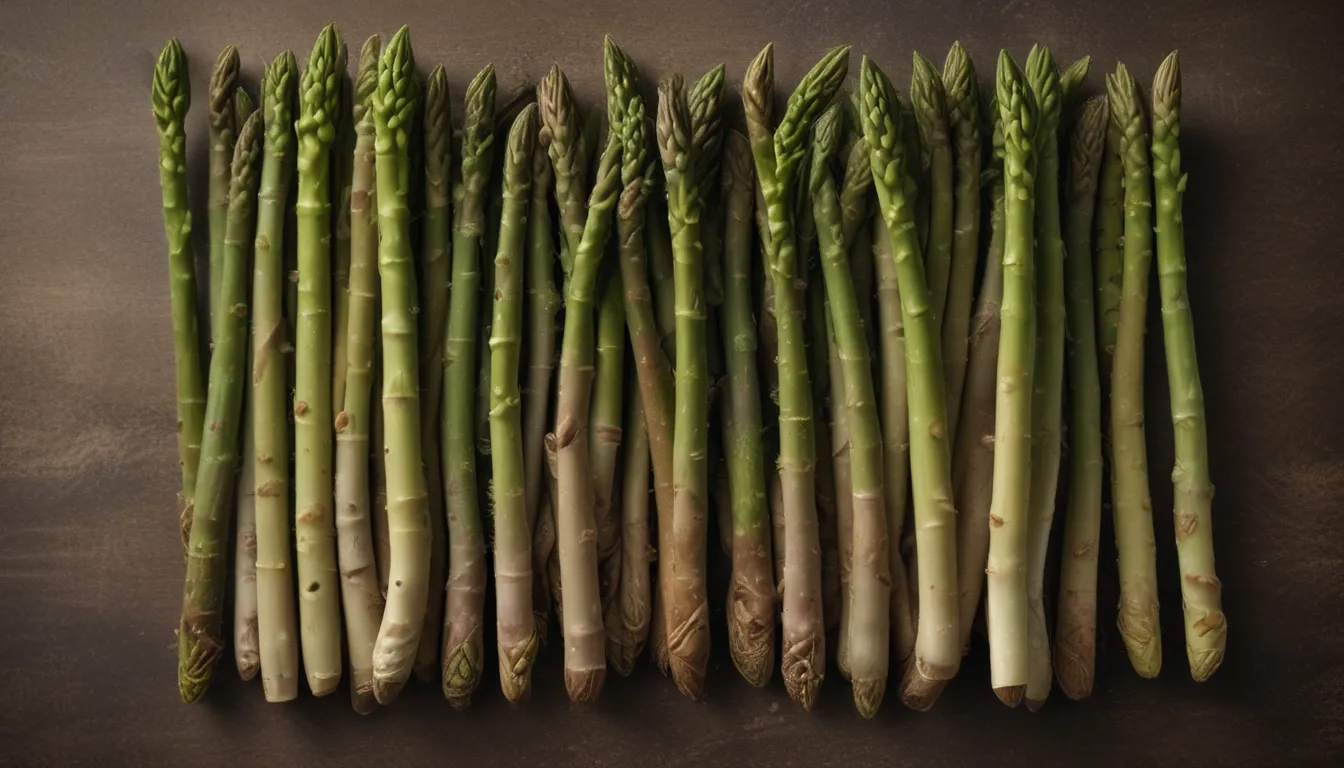The pictures we use in our articles might not show exactly what the words say. We choose these pictures to make you interested in reading more. The pictures work together with the words but don’t take their place. The words still tell you the important facts.
Are you a plant enthusiast seeking to add a touch of elegance to your indoor or outdoor garden? Look no further than Asparagus setaceus, also known as the Asparagus Fern. With its delicate foliage and captivating growth habits, this plant has become a favorite among gardeners and plant lovers alike. Whether you're already a fan of Asparagus setaceus or contemplating adding it to your collection, get ready to uncover 16 fascinating facts about this remarkable plant that will deepen your appreciation and understanding of its beauty.
Unveiling the Mysteries of Asparagus Setaceus
- Not a True Fern: Despite its name, Asparagus setaceus belongs to the Asparagaceae family, closely related to lilies and onions, rather than being a true fern.
- Origins and Growth: Initially discovered in the Cape Province of South Africa, Asparagus setaceus boasts feathery foliage that is widely cultivated for its ornamental value.
- Distinctive Characteristics: Known for its vine-like stems that can extend up to 2 meters, Asparagus setaceus stands out with its cascading branches and unique appearance.
Embracing the Allure of Asparagus Setaceus
- Floral Beauty: While Asparagus setaceus may not boast showy flowers, its small white blooms emit a delightful fragrance, complemented by vibrant red berries.
- Air-Purifying Properties: Beyond its aesthetic appeal, the leaves of Asparagus setaceus function as natural air purifiers, enhancing the atmosphere of indoor spaces.
- Ease of Care: With minimal requirements for light, well-draining soil, and regular watering, Asparagus setaceus proves to be a low-maintenance yet visually striking plant.
Exploring the Versatility of Asparagus Setaceus
- Floral Accent: Asparagus setaceus is a popular choice for floral arrangements and wedding bouquets, adding a touch of elegance and texture to any display.
- Propagation Ease: Whether through seeds, division, or stem cuttings, Asparagus setaceus offers plant enthusiasts a straightforward method to expand their collections or share with others.
- Health Benefits: Steeped in traditional medicine, Asparagus setaceus is reputed for its diuretic and anti-inflammatory properties, with extracts believed to enhance kidney function and reduce inflammation.
Unveiling the Myths and Realities of Asparagus Setaceus
- Pet-Friendly Plant: Good news for pet owners—Asparagus setaceus is non-toxic to cats and dogs, providing a safe option for greenery lovers with furry companions.
- Invasive Concerns: Despite its charm, Asparagus setaceus has been classified as an invasive species in certain regions due to its rapid spread and potential impact on native flora.
- Cancer-Fighting Enzyme: In a surprising twist, Asparagus setaceus produces asparaginase, an enzyme utilized in cancer treatment to inhibit the growth of cancer cells.
Embracing Prosperity and Good Fortune with Asparagus Setaceus
- Symbol of Abundance: Across various cultures, Asparagus setaceus represents good luck and prosperity, making it a thoughtful gift for special occasions and housewarmings.
- Terrarium Delight: Ideal for terrariums and indoor gardens, Asparagus setaceus's trailing nature and adaptability make it a perfect choice for enclosed environments.
Enlightening FAQs on Asparagus Setaceus
- Indoor Growth: Yes, Asparagus setaceus thrives indoors with minimal care requirements, such as well-draining soil and bright indirect light.
- Pet Safety: While Asparagus setaceus is toxic to pets, precautions can be taken to ensure it remains out of reach from curious cats and dogs.
- Watering Needs: Maintain slightly moist soil for Asparagus setaceus, avoiding overwatering to prevent root rot and adjusting watering frequency during winter months.
- Edible Spears: Asparagus setaceus is primarily ornamental, not cultivated for edible asparagus spears. Consider Asparagus officinalis for culinary aspirations.
- Growth Height: Asparagus setaceus can reach up to three feet in height, making it a versatile choice for hanging baskets or as a trailing plant.
Uncover the magic of the asparagus fern (Asparagus densiflorus 'Sprengeri') and dive into the world of container gardening techniques to create stunning displays. Discover top picks for watering cans and explore the enchanting fuchsia plant's vibrant blooms and rich history.
Conclusion: Cultivating Appreciation for Asparagus Setaceus
Asparagus setaceus stands as a testament to nature's beauty, offering a blend of aesthetic charm and practical benefits for plant enthusiasts. Whether you're drawn to its graceful foliage or intrigued by its medicinal properties, this versatile plant continues to enchant and inspire. As you embark on your plant journey, let the allure of Asparagus setaceus guide you towards a deeper connection with the natural world.
Trust in Quality Content Creation
At Gardenersworld.com, our dedication to providing engaging and reliable content is unwavering. Each fact presented on our platform is contributed by our valued users, ensuring a diverse range of insights and information. Our meticulous editorial process guarantees that every piece of content meets the highest standards of accuracy and authenticity. Explore, learn, and trust in the quality of our content as you immerse yourself in the world of plants with us.






